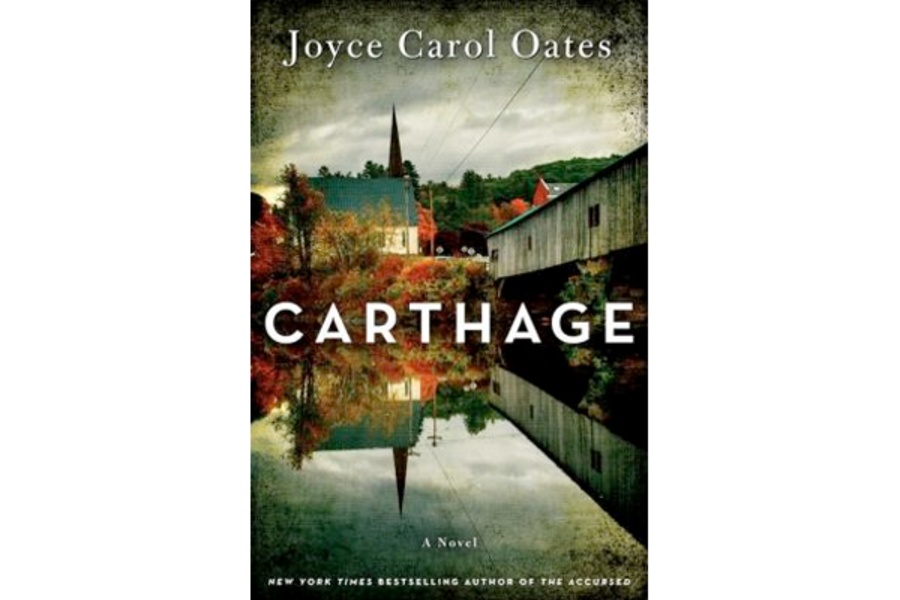Carthage
Loading...
A teenage girl’s disappearance haunts a town in Joyce Carol Oates’s newest novel.
In Carthage, the town takes its rather inauspicious name from the North African city-state that Rome destroyed, salting the earth so that nothing would grow. Here in Michigan, we have a town named Hell – it might have been a more fortuitous choice.
“Carthage” also features a warrior and a spurned woman. It’s thoughtful, ambitious fiction written by an acknowledged master. It’s also pretty humorless. The plot hinges on one character’s monumental self-absorption and its toxic effect on a town. Oates is an author who can write as if she loathes her characters and that ability is on full display here.
At last count, Oates has written 140 books, with topics as diverse as an American family which is down on its luck (“them”), 1950s girl gangs (“Firefox”), Jeffrey Dahmer (“Zombie”), and Marilyn Monroe (“Blonde”). I’ve read about 20, starting with 1980’s Gothic “Bellefleur.” It, “We Were the Mulvaneys,” and “The Falls” are among my personal favorites.
Cressida Mayfield vanished one July night in 2005. The 19-year-old college student was last seen in the Jeep of Brett Kincaid, a decorated Iraq veteran who suffered terrible injuries to both body and mind. He also, until recently, was the fiancé of Cressida’s older sister, Juliet.
Police found blood in the Jeep and Cressida’s sweater turned up in the river, but no body was ever found. Kincaid, his memory wrecked by alcohol, prescription drugs, and traumatic brain injury, cannot remember what happened that night.
"He was prone to seeing things not-there,” he thinks, “and hearing things not-there since the explosion inside his head.”
Cressida’s disappearance becomes linked in his mind to the horrors he witnessed in Iraq and the police interrogations start blending in his mind with earlier ones. The entire town, led by Cressida’s father Zeno, is convinced Kincaid must have done something to the girl. The first 100 pages or so start out as a fairly standard procedural mystery. Then the novel turns abruptly, jumping ahead seven years and landing with claws extended.
Cressida’s absence casts a shadow over the lives of other characters. Unhappy, maladjusted, and horribly jealous of her pretty older sister, as a teen, she took refuge in art, obsessively creating M.C. Escher-like drawings.“Inside her was a clockwork mechanism wound tight, tight, and ever tighter – ticktickticking close to bursting,” Oates writes. She refused to smile in pictures, saying that one of them would be used for her obituary, her mother, Arlette, remembers while gathering photos of the missing girl to pass around to the media.
In an example of horrible parenting, Juliet was labeled the “pretty one” and Cressida was the “smart one” – with predictable results.
“The Mayfield girls were like the daughters of a fairy-tale king,” Oates writes. “Bitterly the younger daughter resented the fact – (if it was a fact, it was unprovable) – that the father loved the elder, more beautiful daughter more than he loved her, whose twisty little heart he couldn’t master.”
In Oates’s fiction, teenage girls can be among the most vindictive, lethal characters out there. Cressida would indulge in small acts of revenge, such as snipping the threads insider her sister’s cashmere sweater so it would slowly unravel.
After she didn’t come home, her father searched for her until he passed out from fatigue. But Zeno also doesn’t think of his youngest child in complimentary terms. “Difficult” is among the more charitable adjectives. “Steeped in the ink of irony as if in the womb.”
“It was like Cressida to laugh in your face. Squinch up her face like a wicked little monkey,” Zeno thinks of his disappeared daughter. “Her laughter was high-pitched like a monkey’s chittering and her small shiny-black eyes were merry with derision.”
The decay inside a picture-perfect American family is a familiar theme for Oates and upstate New York is her old literary stomping grounds. “Carthage” is a knotted, difficult book – as dark and twisty as its vanished main character.
Yvonne Zipp, the Monitor fiction critic, lives in Kalamazoo.






